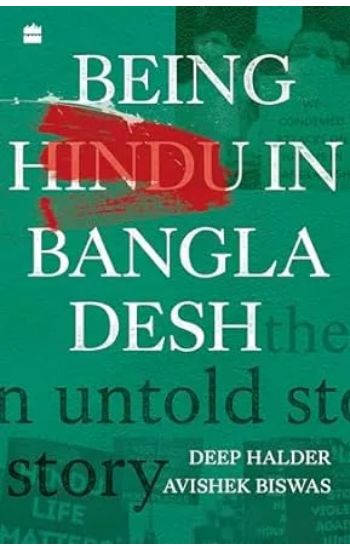
Save: 15%

Save: 15%
Being Hindu in Bangladesh: The Untold Story
Publisher:
| Author:
| Language:
| Format:
₹399 ₹359
Save: 10%
In stock
Ships within:
In stock
ISBN:
Page Extent:
For those who carry the scars of Partition, more than seven decades after arbitrary lines scarred the subcontinent, home is still on the other side of the Padma river. They pine for those who were left behind as a great mass of humanity moved from the east to the west of Bengal to settle in Hindu-majority India. Where are they today in the land that was then east Bengal, which became East Pakistan in 1947, and then Bangladesh in 1971?
According to an estimate from the Bangladesh Bureau of Statistics, there were 17 million Hindus in Bangladesh in 2015, though the population is steadily dwindling. Hindus in Bangladesh in the late 2000s were almost evenly distributed in all regions of the country, with large concentrations in Gopalganj, Dinajpur, Sylhet, Sunamganj, Mymensingh, Khulna, Jessore, Chittagong and parts of Chittagong’s Hill Tracts. Since the rise of Islamist political formations in the country during the 1990s, many Hindus have been threatened or attacked, and substantial numbers are leaving the country for India still. Despite their dwindling numbers, Hindus wield considerable influence because of their geographical concentration in certain regions of the country. They form a majority of the electorate in at least two parliamentary constituencies and account for more than 25% in at least another thirty. For this reason, they are often the deciding factor in parliamentary elections where victory margins can be extremely narrow. It is also alleged that this is a prime reason for many Hindus being prevented from voting in elections, either through intimidating voters, or through exclusion in voter list revisions. In Being Hindu in Bangladesh, journalist Deep Halder and academic Avishek Biswas explore the ground realities behind the statistics. Through extensive research in Bangladesh and using archival material and records, they attempt to sift out the truth behind the numbers. Their aim is to find out the lived experience of those who stayed on in the country, and ask important questions about the nature of identity, its connection with religion, and ultimately, the very idea of ‘home’.
For those who carry the scars of Partition, more than seven decades after arbitrary lines scarred the subcontinent, home is still on the other side of the Padma river. They pine for those who were left behind as a great mass of humanity moved from the east to the west of Bengal to settle in Hindu-majority India. Where are they today in the land that was then east Bengal, which became East Pakistan in 1947, and then Bangladesh in 1971?
According to an estimate from the Bangladesh Bureau of Statistics, there were 17 million Hindus in Bangladesh in 2015, though the population is steadily dwindling. Hindus in Bangladesh in the late 2000s were almost evenly distributed in all regions of the country, with large concentrations in Gopalganj, Dinajpur, Sylhet, Sunamganj, Mymensingh, Khulna, Jessore, Chittagong and parts of Chittagong’s Hill Tracts. Since the rise of Islamist political formations in the country during the 1990s, many Hindus have been threatened or attacked, and substantial numbers are leaving the country for India still. Despite their dwindling numbers, Hindus wield considerable influence because of their geographical concentration in certain regions of the country. They form a majority of the electorate in at least two parliamentary constituencies and account for more than 25% in at least another thirty. For this reason, they are often the deciding factor in parliamentary elections where victory margins can be extremely narrow. It is also alleged that this is a prime reason for many Hindus being prevented from voting in elections, either through intimidating voters, or through exclusion in voter list revisions. In Being Hindu in Bangladesh, journalist Deep Halder and academic Avishek Biswas explore the ground realities behind the statistics. Through extensive research in Bangladesh and using archival material and records, they attempt to sift out the truth behind the numbers. Their aim is to find out the lived experience of those who stayed on in the country, and ask important questions about the nature of identity, its connection with religion, and ultimately, the very idea of ‘home’.
About Author
Reviews
Clear filtersThere are no reviews yet.



Reviews
Clear filtersThere are no reviews yet.